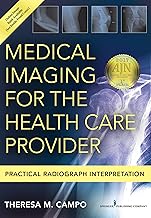Summary of "The Spinal Sessions; Cauda Equina Syndrome - Talk 1: Diagnosis, Surgical Timing and Causation"
Summary of “The Spinal Sessions; Cauda Equina Syndrome - Talk 1: Diagnosis, Surgical Timing and Causation”
This seminar talk, delivered by John Leach, a spinal neurosurgeon and clinical lead for spinal neurosurgery at Salford Royal, provides an expert overview of Cauda Equina Syndrome (CES) focusing on diagnosis, timing of surgery, and causation. The session is part of a series addressing spinal injuries and medico-legal aspects related to CES.
Main Ideas, Concepts, and Lessons Conveyed
1. Introduction to Cauda Equina Syndrome (CES)
- CES is a rare but potentially life-altering condition caused by compression of the lumbosacral nerve roots.
- Early recognition and treatment are essential to prevent permanent disability.
- NHS Resolution data (2008-2018) shows high litigation costs (~£186 million) related to CES claims, highlighting the importance of proper diagnosis and management.
- CES is a clinical diagnosis confirmed by imaging (MRI showing compression of the cauda equina).
- Symptoms include:
- Perineal/saddle numbness
- Bladder, bowel, or sexual dysfunction
- Acute back or leg pain
- Leg weakness and numbness
- CES is most commonly linked to large central lumbar disc prolapses but can also be caused by tumors, trauma, or infection.
2. Challenges in Diagnosis
- Differentiating CES from common back pain and other conditions is difficult, especially for non-spinal specialists such as GPs and emergency doctors.
- Red flags include:
- Bilateral leg symptoms
- Urinary retention or altered urinary flow
- Perineal sensory changes
- Approximately 90% of patients with suspected CES do not have it confirmed on MRI.
- Urinary symptoms can be misleading due to effects of pain medication or pre-existing bladder issues.
- Anal sphincter tone alone is not a reliable sign without other symptoms.
- Bilateral sciatica is a key warning sign but can be confused with other causes of bilateral leg pain (e.g., spinal stenosis, facet joint pain, orthopedic problems).
- Access to emergency MRI is a major bottleneck, compounded by workforce shortages and reluctance to interrupt planned scans.
3. Pathophysiology
- Autonomic nerves (parasympathetic) controlling bladder and perineal sensation are small and unmyelinated, making them more vulnerable to damage than larger somatic nerves.
- CES causes impaired bladder sensation and contractility, risking irreversible bladder damage if untreated.
- Urology guidelines recommend catheterization for CES patients undergoing surgery to prevent bladder overdistension.
- Sexual dysfunction in CES is multifactorial, involving nerve damage, pain, and psychological factors.
4. Surgical Timing and Outcomes
- Literature shows earlier surgery generally leads to better outcomes, particularly for bladder function.
- Meta-analyses suggest:
- Surgery within 48 hours is better than after 48 hours.
- Some evidence supports surgery within 24 hours being better than surgery between 24-48 hours.
- Some studies differentiate between:
- CES with retention (CESR) — poorer prognosis
- Incomplete CES (CESI)
- Conflicting retrospective data exist due to study design limitations; randomized controlled trials are not possible for ethical reasons.
- Large database studies support earlier intervention but often lack detailed clinical outcomes.
- Recent studies show some patients with CESR do improve post-surgery, challenging the view that CESR always has a poor prognosis.
- Overall, a continuum of harm exists: earlier surgery tends to yield better outcomes, but not all patients fully recover.
- Timing must be balanced with risks of night-time surgery, which has higher complication rates (e.g., dural tears, infections), possibly due to fatigue and staffing issues.
5. Legal and Clinical Considerations
- Litigation is a significant concern in CES cases; NHS pays large sums annually for spinal surgery claims.
- Night-time surgery poses a dilemma between urgency and increased risk of complications.
- Consent should include discussion of risks related to timing of surgery (Montgomery ruling considerations).
- Clinical judgment is crucial in balancing surgical urgency versus risks.
- There is ongoing work toward national guidelines for CES management to standardize care and reduce variation.
6. Key Takeaways
- CES diagnosis is complex and requires careful clinical and imaging assessment.
- Early surgery (ideally within 24-48 hours of symptom onset) is associated with better neurological and bladder outcomes.
- Not all patients recover fully, especially those with CESR.
- Emergency MRI access and timely referral pathways remain critical challenges.
- Night surgery should be reserved for rapidly deteriorating cases after weighing risks.
- Patient education and safety netting are essential to improve early presentation.
- National guidelines are forthcoming to aid in uniform management.
Methodology / Instructions (Summary of Clinical and Legal Approach)
- Diagnosis:
- Recognize red flags: bilateral leg symptoms, saddle anesthesia, urinary retention or altered flow.
- Use MRI to confirm diagnosis; understand that approximately 90% of scans may be negative.
(Note: The original summary text ended abruptly here.)
Category
Educational
Share this summary
Featured Products

White PVC Replacement Tube Supplies Colon Tubes Kit Clear Replacements Hose with Flexible Rounded End for Smooth Insert Catheters for Women Men FR12 (30 Pieces)
View on Amazon



